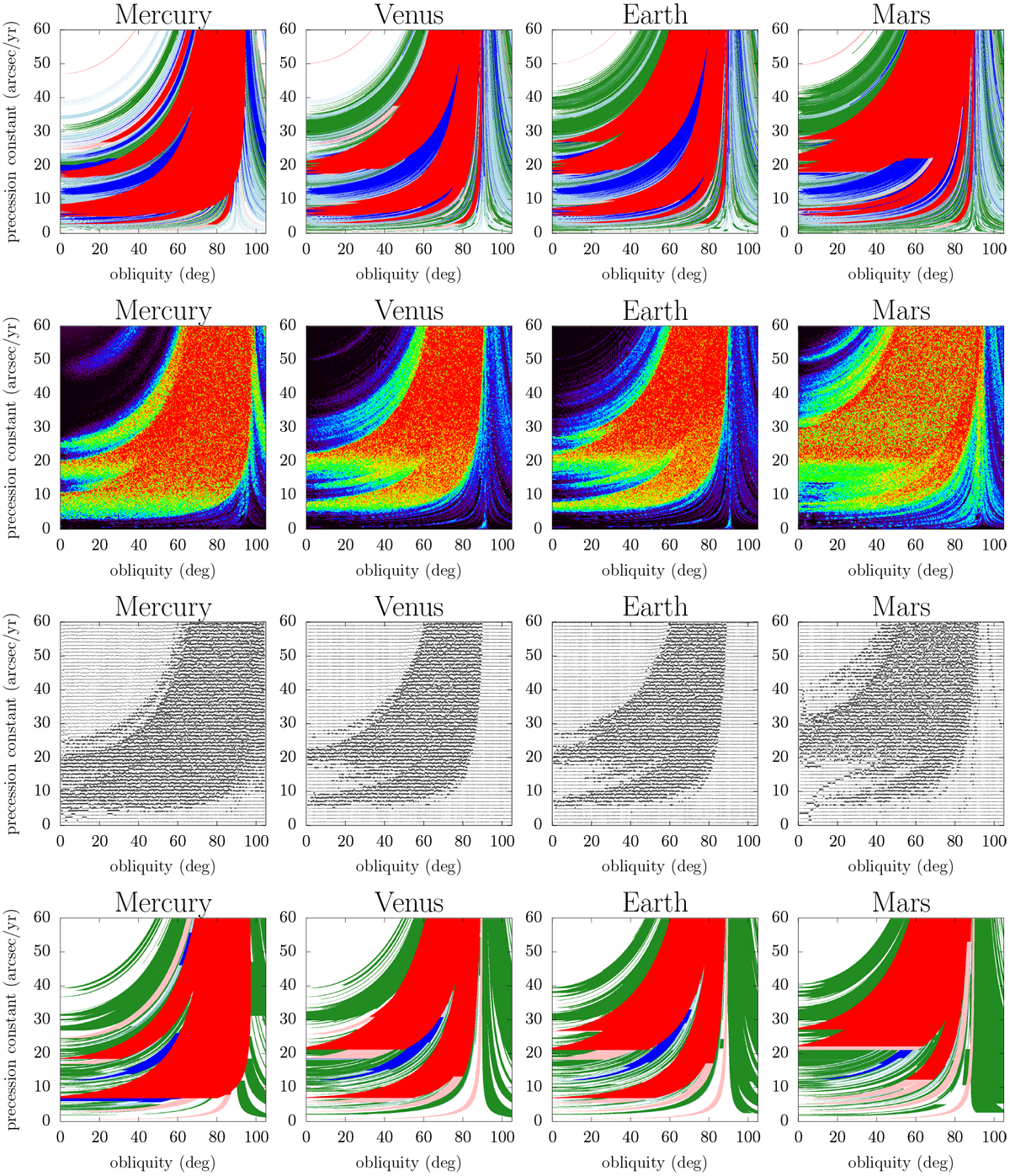Fig. 3

Top row: estimate of the chaotic regions of the spin dynamics as the superposition of secular spin-orbit resonances. The orbitalevolution of each planet is approximated by the synthetic representation of Laskar (1990), as detailed in Appendix F. Light-red and dark-red regions represent the first-order resonances and their overlaps, respectively(Colombo’s top Hamiltonian, Sect. 2.2); light-blue and dark-blue regions represent the second-orderresonances and their overlap (Sect. 2.4); and green regions represent the overlap of third-order resonances. The non-overlapping third-order resonances are not indicated because they are very thin and thus unimportant for a global picture of the dynamics. Second row: as a comparison, the system given by Eq. (1) is integrated numerically with the same orbital model (quasi-periodic decomposition of Laskar 1990), and a frequency map analysis is performed to locate the chaotic zones. The colour scale goes from black (no chaos), to red (strong chaos). Third row: same maps obtained from a more detailed model in which the orbital evolution is directly taken from a numerical integration (adapted from Laskar & Robutel 1993). In the weakly chaotic zones, the dots are shifted vertically according to the level of chaos; in the strongly chaotic zones, they are plotted in boldface. Bottom row: same as top row, but the long-term orbital evolution of each planet is approximated by the Lagrange-Laplace system (Sect. 3.1). The eight planets of the solar system are included, with the initial conditions of Bretagnon (1982).
Current usage metrics show cumulative count of Article Views (full-text article views including HTML views, PDF and ePub downloads, according to the available data) and Abstracts Views on Vision4Press platform.
Data correspond to usage on the plateform after 2015. The current usage metrics is available 48-96 hours after online publication and is updated daily on week days.
Initial download of the metrics may take a while.


